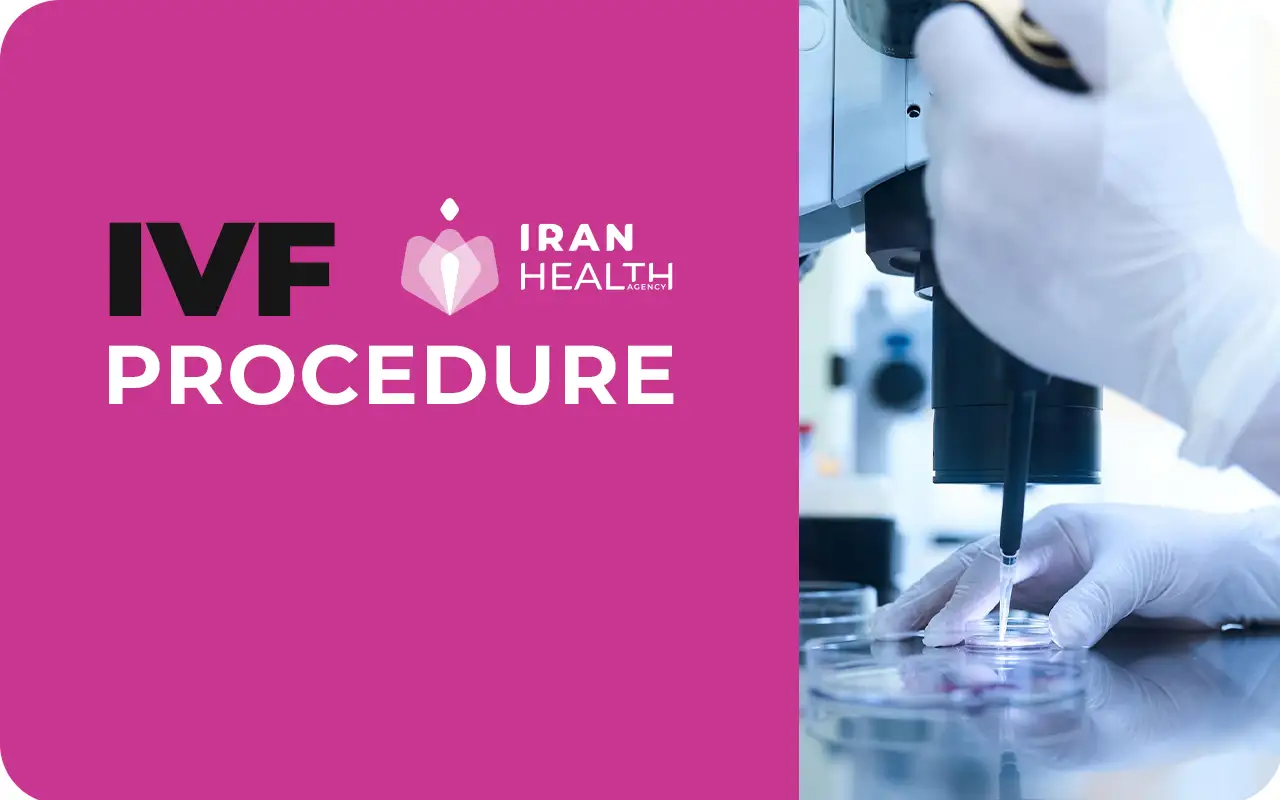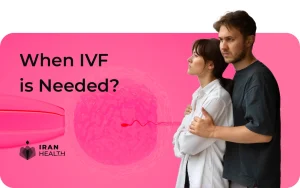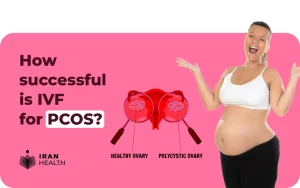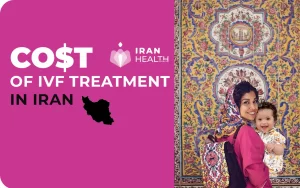IranHealthAgency as an expert in infertility issues, explains each step—from ovarian stimulation to embryo transfer—in clear, patient-friendly language. By choosing IVF in Iran, you gain access to cutting-edge medical technologies and highly experienced specialists. This comprehensive approach ensures that every stage of the process is managed with precision and personalized care.
IVF meaning
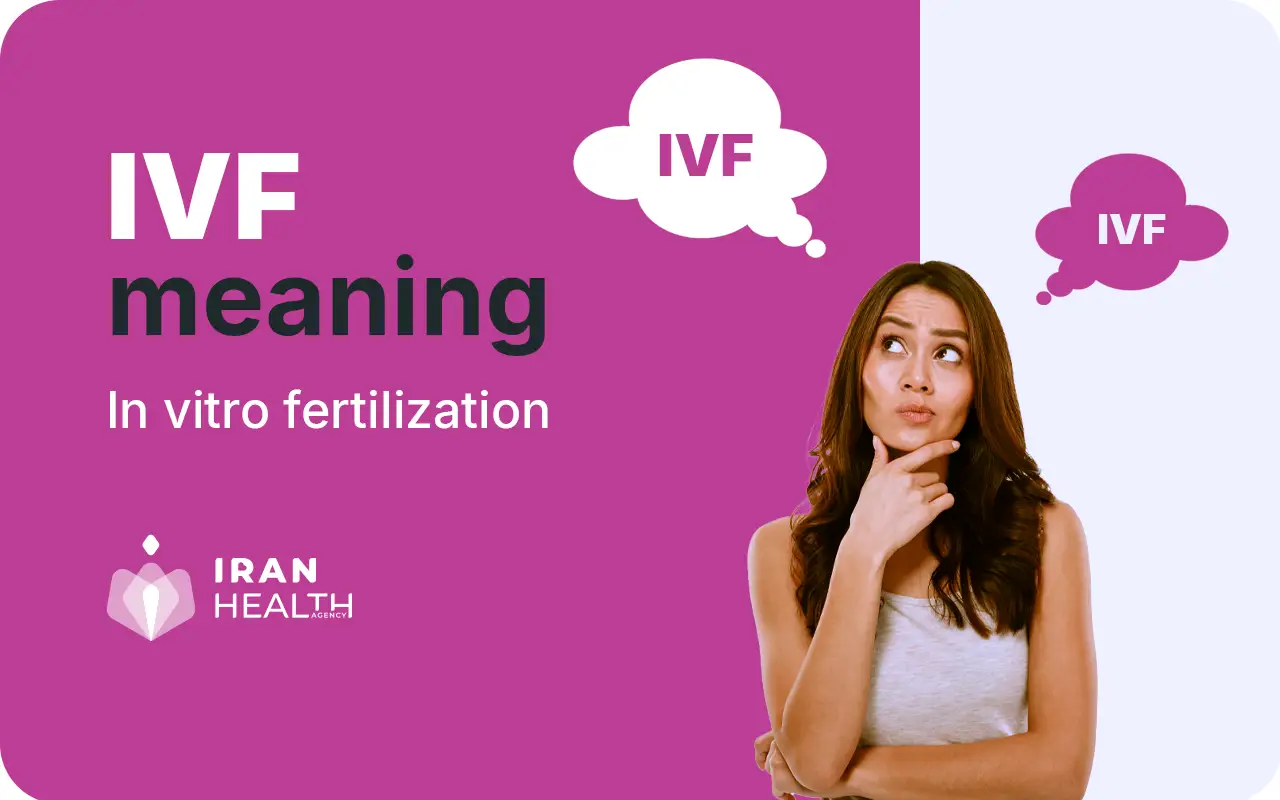
In vitro fertilization (IVF) is one way to help people who have trouble getting pregnant have a baby. During IVF, a lab takes an egg from a woman’s ovaries and fertilizes it with sperm. The woman then places the fertilized embryo back into her body to grow. IVF stands for “in vitro fertilization.” It is a complicated set of treatments that can help a woman get pregnant. For most couples, impotence means they have tried to get pregnant for at least a year and still haven’t been able to. Additionally, IVF can prevent the transmission of DNA problems to a child.
IVF process step-by-step
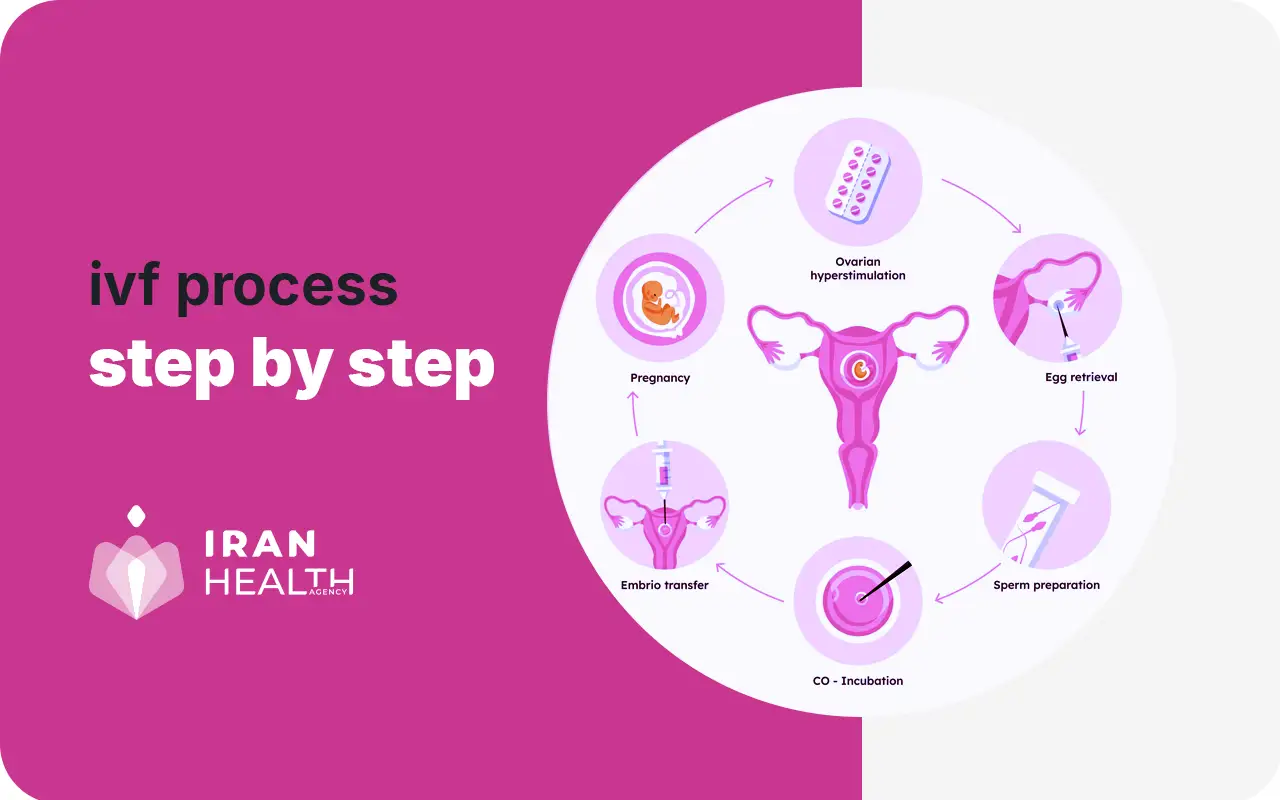
Beginning the in vitro fertilization (IVF) process can be overwhelming, but by understanding the five main steps and the available support and guidance, you can navigate with confidence and reassurance.
Five main steps make up the IVF process:
- Ovarian stimulation
- Egg retrieval
- Sperm collection/retrieval
- Fertilization & embryo development
- Embryo transfer
What are the 5 stages of IVF?
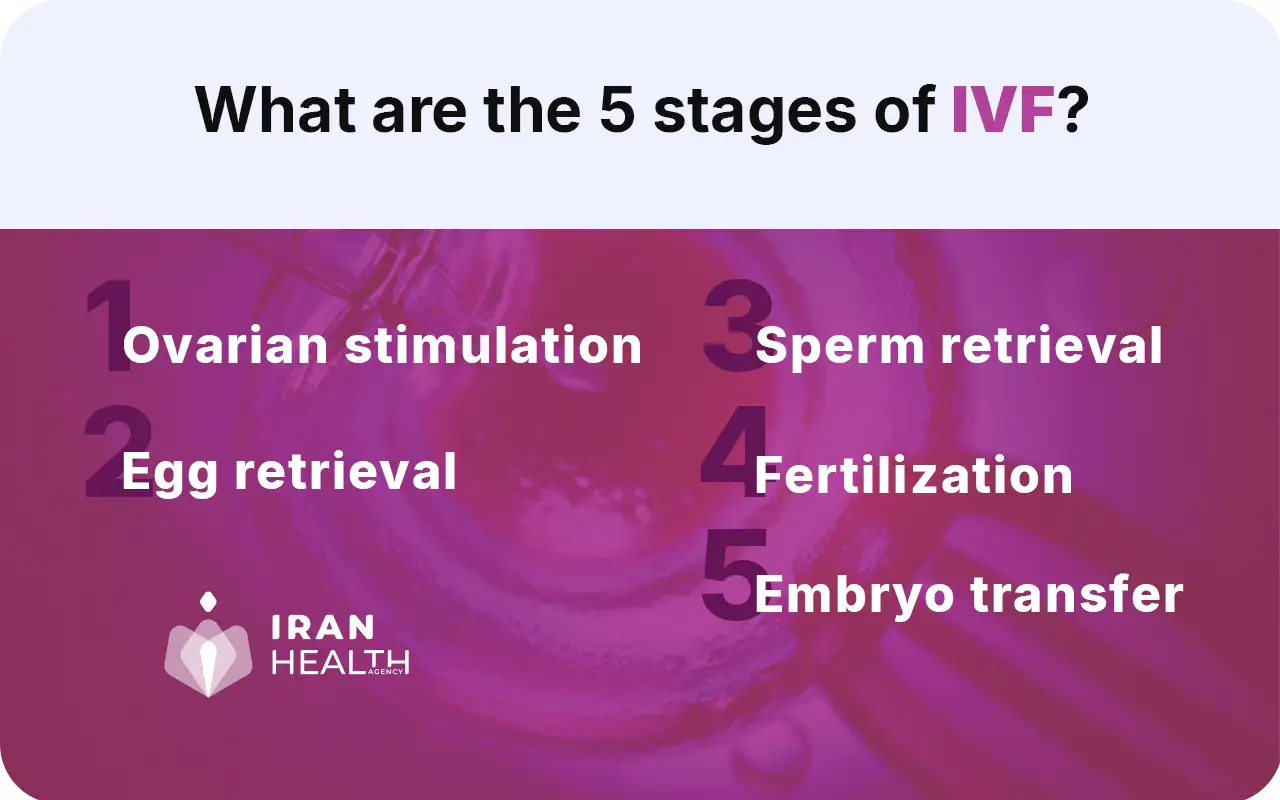
stage 1: Ovarian stimulation
Your doctor will give you hormone injections or other medicines to make your ovaries produce more than one egg instead of the one that usually develops every month, whether you are using your eggs or an egg donor. This makes it more likely that at least one embryo will be healthy enough to be used in the IVF process.
To stimulate ovarian follicles (cysts with tiny eggs inside), you will need several different fertility drugs. These include a follicle-stimulating hormone (FSH) that helps eggs develop and gets the lining of your uterus ready to hold the fertilized egg.
Your ovaries typically stimulate more than ten days before your eggs are ready for collection. At this point, you
You will have blood tests to check your estrogen levels and a vaginal scan to look at your ovarian follicles. We can start the egg removal process after using ultrasound to ensure your follicles are the correct size.
stage 2: Egg retrieval
Usually, the doctor’s office performs egg retrieval about 36 hours after the last “trigger shot” to mature the eggs. Because waiting more than 36 hours can lead to ovulation and the loss of some or all of the eggs, the timing of the egg retrieval is critical.
We carefully remove the eggs from each ovary using a transvaginal ultrasound-guided needle aspiration after intravenous sedation. Usually, the procedure removes multiple eggs in about 20 minutes. We then place the eggs in a growth medium, and later that same day, we add sperm to fertilize the eggs. Following the operation, you may experience cramps, for which you will receive medication.
stage 3: Sperm retrieval
You will need to give a sample of your sperm on the morning of the operation if you want to use your partner’s sperm, too. Sperm from a stranger can also be used. Sperm, on the other hand, can be collected ahead of time and frozen in some situations. There are several ways to get sperm from men, based on their
health and having children. In some situations, it may be necessary to retrieve sperm through surgery.
stage 4: Fertilization
During IVF, there are two main ways to get an egg to hatch:
- In conventional insemination, healthy sperm and eggs are put in a Petri dish in a lab and left to fertilize overnight.
- When testicular sperm are used, or there is male factor infertility, intracytoplasmic sperm injection (ICSI) is used to put sperm into each egg.
You and your doctor must wait up to 20 hours after the sperm and egg are joined to see if fertilization has happened. After fertilizing, the eggs may be left to grow in the lab for up to six days. After that, they will move on to step five.
Other techniques that your doctor may suggest before step five are the following:
- In some cases, assisted “hatching” involves making a small cut in the embryo’s shell before the transfer to help it settle better.
- Preimplantation genetic testing (PGT) checks the embryos’ genes before transferring them. This is done to see if the embryos are chromosomally normal and to check for certain genetic diseases based on your genetic screening. Before the analysis results are public, the embryos are frozen after PGT on day five or six of growth.
stage 5: Embryo transfer
Depending on your case, your doctor will see you again for the embryo transfer two to five days after the egg extraction. Before the visit and for the entire first trimester, you will still be on hormones to support the endometrium, the lining of your uterus.
The doctor will use an ultrasound to guide the insertion of a soft, bendable tube (catheter) into your uterus for embryo transfer. The doctor then carefully inserts the eggs into your uterus. You might be able to freeze any more eggs that have the potential to become babies and use them in the future to attempt pregnancy.
You can usually return to your normal activities, like working out, after embryo transfer. However, it’s best to avoid sexual activity until you get a pregnancy test. You might feel a little fat or have sore breasts. Having cramps or passing a small amount of bloody fluid could mean that the egg has implanted.
Your doctor will check your blood to see if you are pregnant less than two weeks after the embryo transfer. We will repeat the test in two days if you are pregnant. If the hormone hCG level in your blood is growing normally, you will have a vaginal ultrasound about three weeks later to check on the health of the pregnancy.
Remember that while you might get pregnant on the first try, it’s also possible that you might not. However, it’s important to stay encouraged and think of your IVF journey as a process that offers the potential for success with each embryo transfer.
Conclusion
Modern Iranian IVF labs employ qualified doctors with a high success rate in infertility treatment and assisted reproductive technology. In Iran, you can pick your unborn child’s gender. A lot of medical tourists choose to go to Iran to treat their infertility because the treatments are of good quality and don’t cost a lot of money. You can contact us to learn more about IVF in Iran by clicking the image below:
FAQ:
Is it painful to do IVF?
Every patient reacts differently to IVF; what hurts one may not hurt another. You may have some pain during injections or egg retrieval, but it is never severe.
How long does IVF take to get pregnant?
The average IVF cycle takes 6-8 weeks. It involves an initial consultation, 8-14 days of ovarian stimulation, egg retrieval, fertilization, embryo transfer, and a pregnancy test. The embryo transfer and pregnancy test usually occur five days after fertilization.
Is IVF successful on the first try?
IVF first-try success rates range from 20-35%.
Reference
- https://www.plannedparenthood.org/learn/pregnancy/fertility-treatments/what-ivf
- Gerardo RH. Pain management protocol for oocyte retrieval in low-resource setting assisted reproductive technology: Patient survey (Doctoral dissertation, Stellenbosch: Stellenbosch University).
- https://www.mayoclinic.org/tests-procedures/in-vitro-fertilization/about/pac-203847
- Botha N. Making a Baby: A Social Investigation of Assisted Reproductive Technologies in and Around Pretoria. University of Pretoria (South Africa); 2016.
